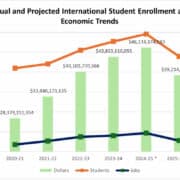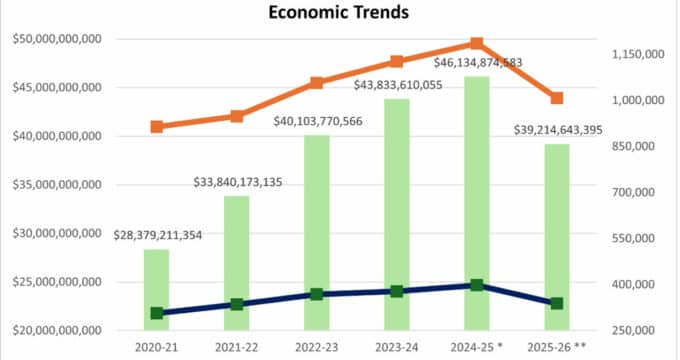Australian international student enrolments up 11% through September 2019
Australia is once again on its way to double-digit growth in international student numbers for 2019, with 720,150 students enrolled across various sectors as of September 2019, a 11% increase over the same time the previous year. This growth reconfirms Australia’s position as the second-most popular destination in the world for study abroad, after only the US.
Foreign student numbers in Australia grew by 11.4% in 2018 and 12.6% in 2017, so this will be the third year of major increases in the international student population.
Responsible for most of the growth are the higher education and vocational (VET) sectors, contributing 12% and 17% year-over-year increases, respectively. ELICOS (English-language training) increased marginally (3% growth) and there were small decreases registered for schools (-4%) and non-award programmes (-4%).
Five countries compose more than half of all international student enrolments in the country:
- China (28% of the total)
- India (15% of the total)
- Nepal (7% of the total)
- Brazil (4% of the total)
- Vietnam (3.5% of the total)
However, the flow of Chinese students into Australia is slowing, with a modest 5% increase in numbers from September 2018 to September 2019. By contrast, India contributed 33% more students and Nepal 31% more. Vietnamese numbers increased by 7%, and Brazil by just 4%.
Other significant changes were decreases for Malaysia (-7.5%) and South Korea (-3.2%) and a dramatic increase from Colombia, which sent 21% students in 2019.
Notable changes by sector
Looking at sector values comparing August 2019 to August 2018 in higher education, it was India and Nepal that boosted overall numbers (up 31% and 24%, respectively). Malaysian student numbers were down by just over 7%, falling to 12,815. China was up by 4%.
VET providers have seen many more Indian (up 45%) and Nepalese (up 64%) students this year. The Chinese market for Australian VET grew by 11.5% and the Korean market is down 6.5% so far in 2019.
Colombia was the only reason that ELICOS didn’t see negative growth in August 2019 compared with August 2018: Colombian student numbers increased by 19.5% to 12,195 and Colombians displaced Brazilians as the second largest international student group for the sector. Meanwhile, Chinese enrolments in ELICOS fell by 9.5% and Brazil sent 10.5% fewer students.
Australian schools saw 11% fewer Chinese students enrolled in August 2019 than in August 2018, which will have a particular impact since Chinese are especially overrepresented in this sector (47.5% of the total). The second-most important market, Vietnam (16.5% of the total) sent 22% more students.
Diversification needed
The levelling off of Chinese numbers will be a troubling trend for many Australian universities, language institutes, and schools which have become highly reliant on this market for revenues. A paper by University of Sydney sociologist Salvatore Babones published last year, The China Student Boom and the Risks It Poses to Australian Universities, raised the alarm about this reliance. The paper argued that seven universities (University of Melbourne, Australian National University (ANU), University of Sydney, University of New South Wales (UNSW), University of Technology Sydney (UTS), University of Adelaide, and University of Queensland), had higher proportions of international and Chinese students than any university in the entire United States.” Dr Babones continued, “Indeed, all seven appear to be more dependent on fee-paying Chinese students than just about any other university in the English-speaking world.”
Several other markets other than India and Nepal are currently sending upwards of 20,000 students to Australia each year: Vietnam, Brazil, South Korea, Thailand, Malaysia, and Colombia (with Indonesia very close to 20,000 as well). These are the countries that will be important recruiting markets going forward. Of these markets, however, only Colombia and to a lesser extent Vietnam and Indonesia had sent substantially more students in September 2019 than in September 2018. It was Nepal and India that really drove the 11% total increase registered at mid-year.
For additional background please see:


















